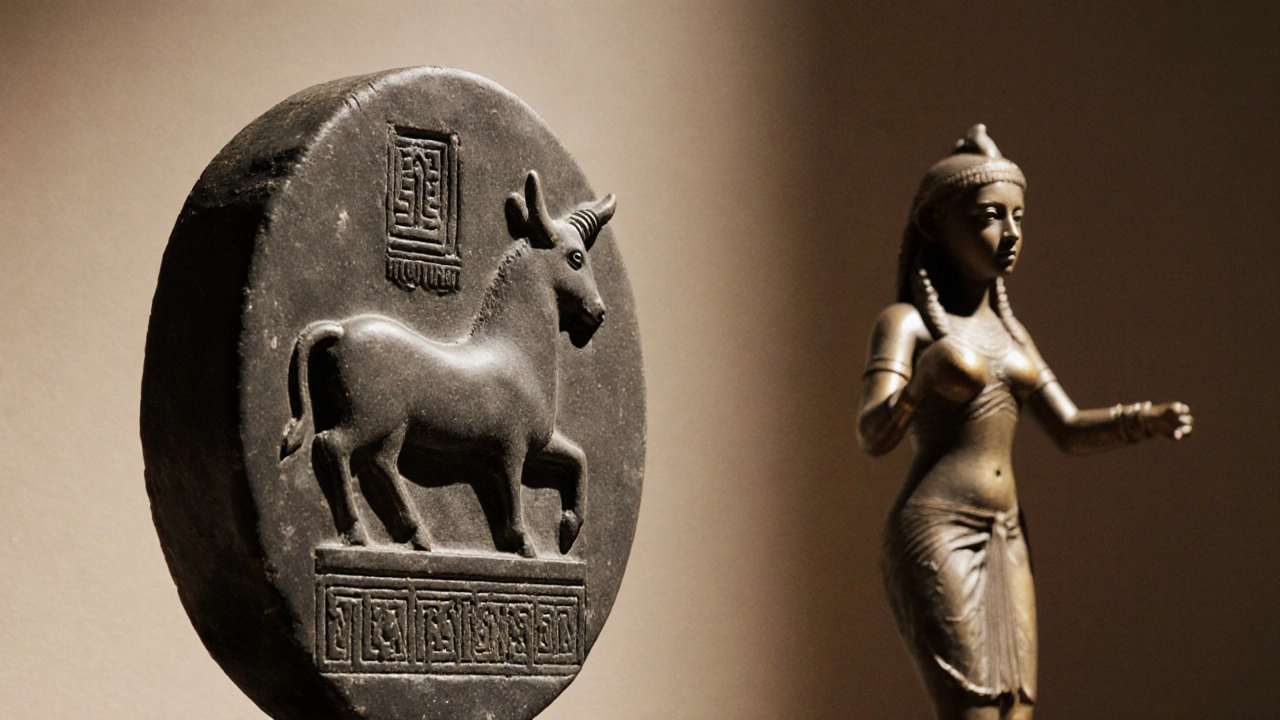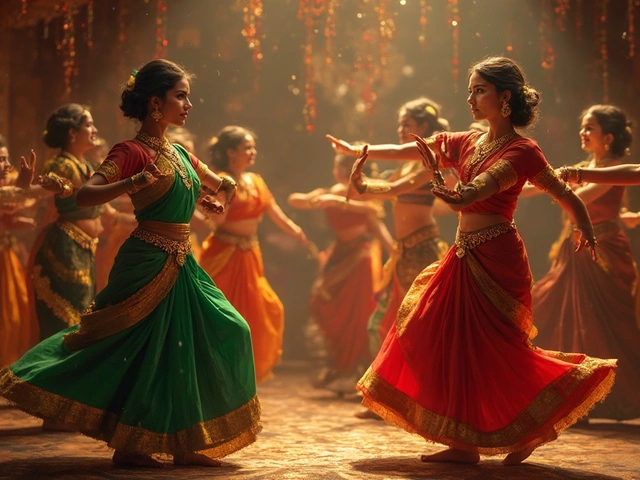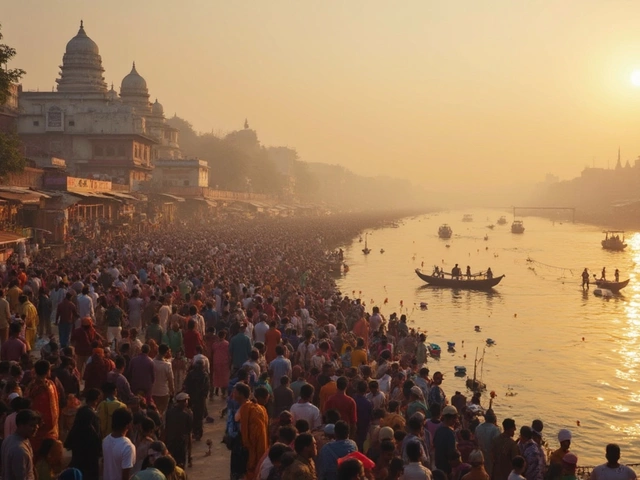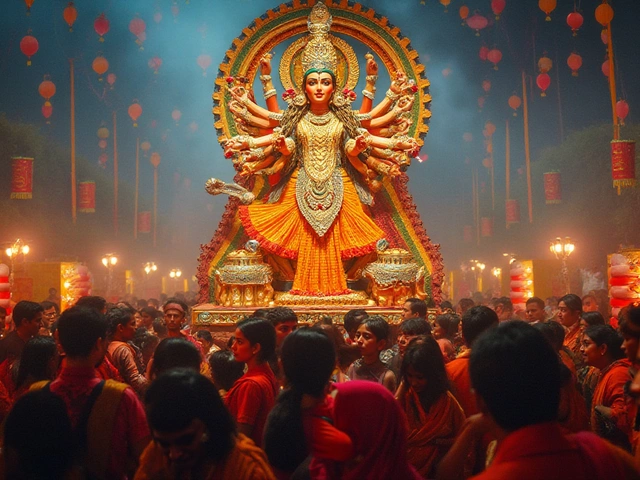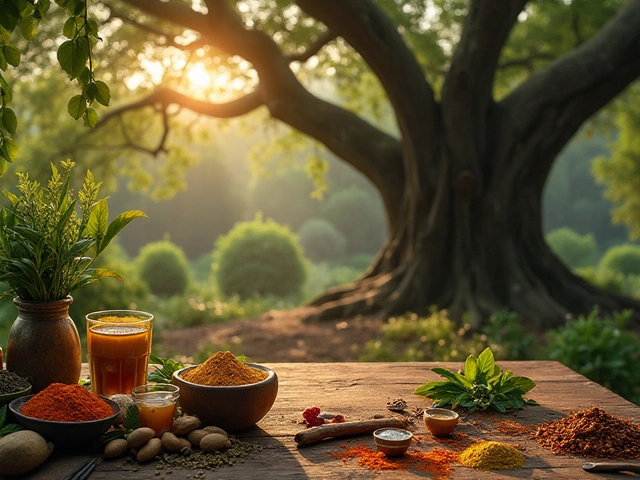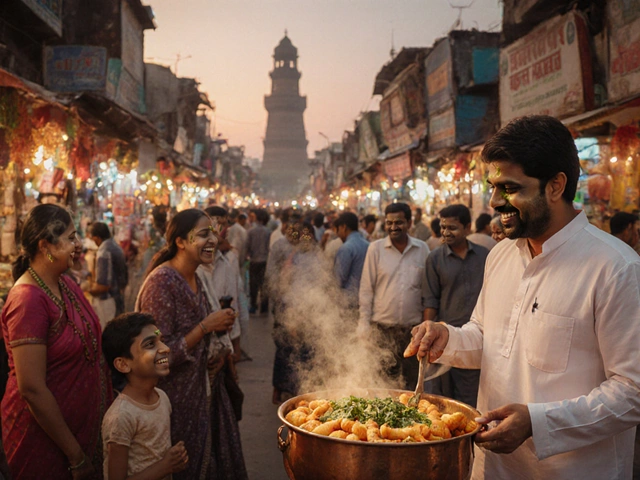When people think of Indian art is a vast tapestry of styles, symbols, and techniques that stretch back millennia. Understanding Indian art origins means following a trail that snakes through river valleys, royal courts, and stone sanctuaries. Let’s walk through the milestones that shaped the visual language of the subcontinent, from the earliest clay figurines to the intricate murals that still inspire today.
Early sparks: The Indus Valley Civilization
The oldest recognizable artistic expressions in South Asia belong to the Indus Valley Civilization (c. 3300-1300BCE). Archaeologists uncovered sealed seals carved from steatite that depict animals, stylized deities, and geometric motifs. One of the most famous finds is the "Dancing Girl" bronze figurine from Mohenjo‑Daro - a life‑size, confident pose that suggests a sophisticated sense of proportion and movement.
- Materials: steatite, bronze, terracotta
- Key motifs: unicorn, bull, tree‑like symbols
- Artistic focus: trade seals, household idols, decorative beads
These artifacts reveal a culture that valued both functional design and symbolic depth, laying a groundwork for later religious and courtly art.
From ashoka’s edicts to Mauryan sculpture
Fast‑forward to the Maurya Empire (322-185BCE). Emperor Ashoka’s conversion to Buddhism triggered a massive public art program. The iconic Ashoka Pillars, topped with the Lion Capital of Sarnath, combined polished sandstone polishing techniques (probably learned from earlier Persian workshops) with native animal symbolism.
- Stone polishing gave a mirror‑like finish that impressed pilgrims.
- Reliefs on the pillars narrated scenes from the Buddha’s life.
- They served as both political statements and religious markers.
Mauryan art also produced the famous Didarganj Yakshi, a polished marble statue that blends idealized female form with subtle indigenous details, hinting at a growing comfort with three‑dimensional representation.
Stupas, caves, and the spread of Buddhist art
As Buddhism spread along the Silk Road, so did its visual vocabulary. The rock‑cut Ajanta Caves (2ndcentury BCE-6thcentury CE) showcase narrative murals that depict Jataka tales with vibrant pigments derived from mineral sources. Artists employed a technique called “dry fresco” where pigments were applied onto a dry plaster surface, a method that preserved colors for centuries.
Meanwhile, the Ellora Caves merged Buddhist, Hindu, and Jain iconography, illustrating how artistic styles could coexist and borrow from one another. The evolution from simple stupa decorations to complex human figures reflects a gradual mastery over perspective, anatomy, and storytelling.
The Gupta Golden Age: Classical Indian Aesthetics
Between the 4th and 6th centuries CE, the Gupta Empire ushered in what scholars call the “Classical Era” of Indian art. Sculptors refined the idealized human form, establishing canonized proportions that still guide temple art today. The famed bronze statues of the Buddha from Sarnath display serene expressions, elongated earlobes, and subtle drapery folds-a visual language that would travel across Southeast Asia.
| Aspect | Typical Feature | Example |
|---|---|---|
| Material | Bronze, stone, terracotta | Bronze Buddha of Sarnath |
| Form | Idealized, symmetrical, gentle smile | Shiva Nataraja statue |
| Iconography | Lotus throne, halo, dharma wheel | Ajanta frescoes |
These standards seeped into Hindu temple sculpture, where the same proportions dictated depictions of Vishnu, Shiva, and Devi.
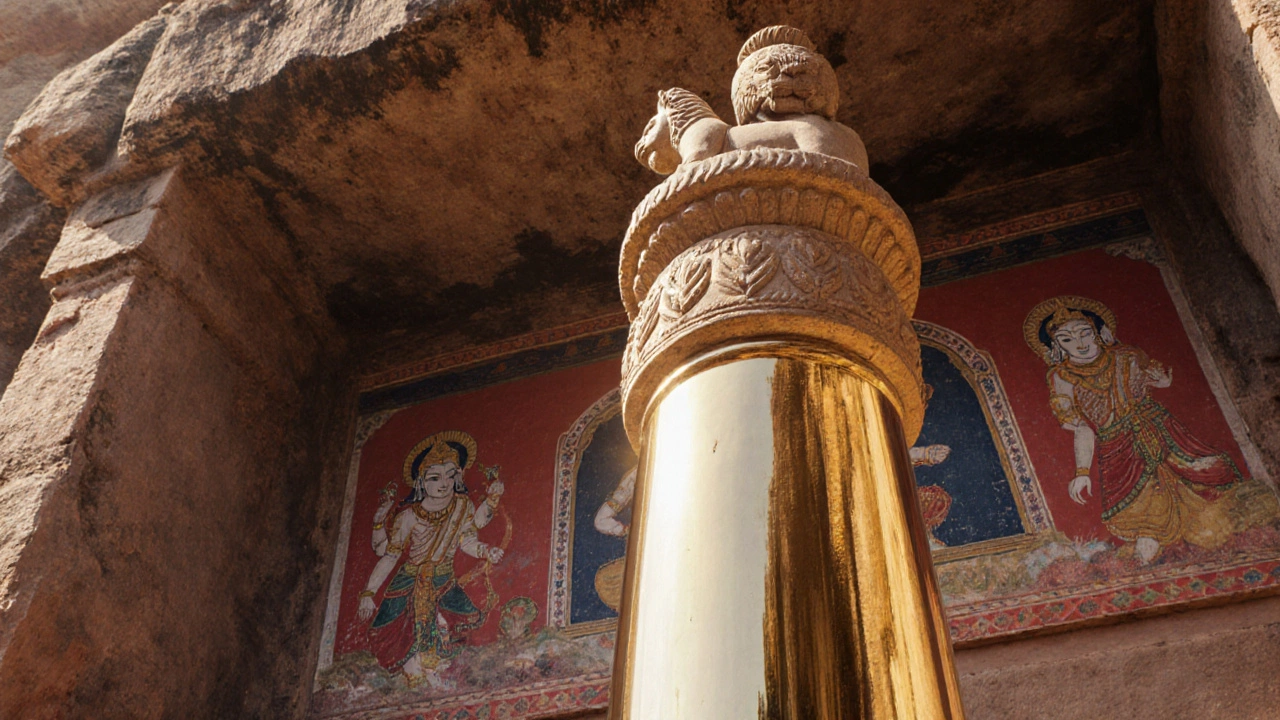
South Indian Dravidian architecture and temple sculpture
In the south, the Dravidian architectural tradition blossomed under the Pallavas, Cholas, and later the Vijayanagara empire. Temple walls became massive canvases for narrative reliefs. The Shiva temple at Thanjavur (Brihadeeswarar) showcases towering gopurams adorned with over 9,000 sculpted figures, each rendered with meticulous attention to facial features and intricate jewelry.
These sculptures often portrayed everyday life-farmers, musicians, merchants-integrating the divine with the mundane. This blend underscored a cultural belief that the sacred resides in ordinary moments.
Islamic influence: Mughal miniature painting
The arrival of Islam in the Indian subcontinent introduced new artistic vocabularies. While Mughal patrons favored architecture, they also cultivated a dazzling miniature tradition. Artists like Mir Sayyid Ali blended Persian techniques with Indian subjects, producing works that featured delicate brushwork, vibrant pigments, and realistic human anatomy.
Miniatures served as court chronicles, illustrating battles, royal processions, and literary epics. The marriage of Persian arabesques with Indian flora-such as the lotus and mango-marked a unique syncretic visual language that still informs contemporary Indian illustration.
Regional folk art and handicrafts
Beyond elite courts, countless regional traditions kept artistic expression alive. Madhubani paintings from Bihar, Warli patterns from Maharashtra, and Pattachitra scrolls from Odisha each carry distinct motifs and materials. While techniques vary-hand‑applied rice paste, natural dyes, or bark cloth-the underlying principle remains: art as a communal storyteller.
These folk forms often trace roots back to tribal rituals predating the major kingdoms, reminding us that Indian art never came from a single source but from a tapestry of localized practices.
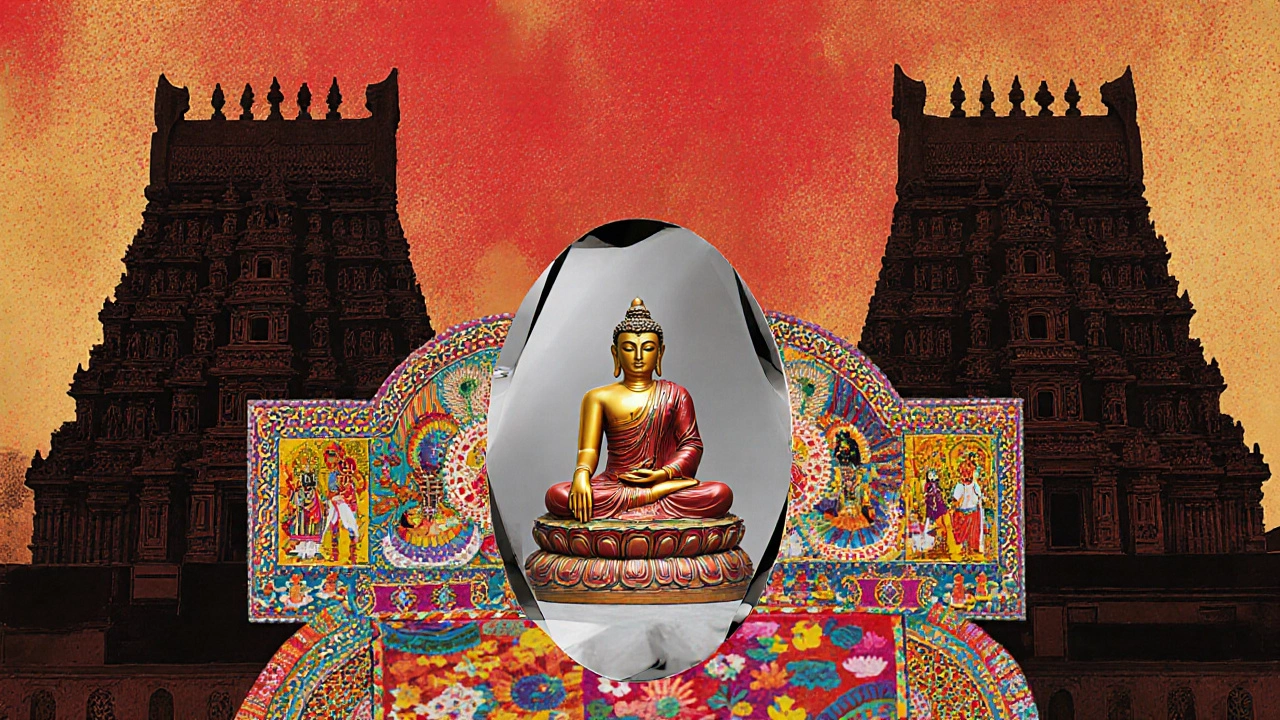
Modern reinterpretations and global impact
Contemporary Indian artists draw on centuries of visual vocabulary while pushing boundaries. From the abstract works of M.F. Husain that echo mythic narratives to the digital installations of Anish Kapoor that reference ancient stone monoliths, the dialogue between past and present continues.
Internationally, Indian motifs appear in fashion, graphic design, and even video game art, proving that the origins of Indian art have become a global well‑spring of inspiration.
Key takeaways
- Indian art originated in the Indus Valley with symbolic seals and bronze figurines.
- Mauryan pillars and polished stone sculpture introduced refined techniques and Buddhist storytelling.
- The Gupta era standardized ideal human proportions still used in temple art.
- Southern Dravidian temples integrated daily life into divine narratives.
- Mughal miniatures fused Persian and Indian aesthetics, while folk traditions preserved localized visual languages.
- Modern creators reinterpret ancient motifs, keeping the artistic lineage alive worldwide.
Frequently Asked Questions
What is the earliest known Indian artwork?
The oldest surviving pieces are the steatite seals and the bronze "Dancing Girl" from the Indus Valley Civilization, dating to around 2500BCE.
How did Buddhism shape Indian visual culture?
Buddhism introduced narrative reliefs, stupas, and rock‑cut caves like Ajanta. Artists used fresco techniques to depict Jataka tales, spreading a visual language that traveled along the Silk Road.
What are the hallmarks of Gupta‑period sculpture?
Idealized human forms, smooth polished surfaces, subtle smiles, and standardized proportions (e.g., a 3:2 height‑to‑width ratio for the torso) define Gupta sculpture.
How did Islamic rule influence Indian art?
The Mughal court nurtured miniature painting, blending Persian brushwork with Indian subjects, natural pigments, and detailed courtly narratives.
Are folk art traditions considered part of Indian art history?
Yes. Forms like Madhubani, Warli, and Pattachitra preserve regional symbols and techniques that predate many classical kingdoms, adding depth to the overall artistic timeline.
